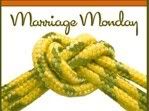WHAT'S BLUE GOT TO DO, GOT TO DO WITH IT? WHAT'S BLUE BUT A SECOND-HAND EMOTION?
No seriously, it could be this, and Tina Turner probably doesn't know it either. You'd better read on then. She, we, and others may find this little bit of information interesting.
Colors were spoken of in the Bible in connection with literal things, and they also had symbolic meanings. From my studies, the KJV speaks of many more colors than any other version, but all versions make reference to the more popular ones we're used to hearing about, like crimson, black, red, etc. So, what does mentioning the colors of the Bible have to do with wisdom? Well, the more you know and are able to see and understand God's Word clearer (how and why the Bible made reference to certain things in the culture and times that it did), the wiser you are, the more you take that new found wisdom and ask God what it has to do with you or how you can apply any truths or facts you've found to your life. Sounds like a plan to me.
First, I'll make you a list of the colors that the KJV mentions (My only question to this was, "why does the KJV mention more colors or translate over more colors than other versions?" The answer to that is long and would require a whole other post). This longer list will include all of the colors that other versions mention. Then, I'll try and give you a brief summary of what the colors were literally describing and what their symbolic meaning has come to be known as today. The symbolic meanings are either alluded to in the Bible or have just come to be known as such over the years.
(1) bay,
(2) black,
(3) blue,
(4) brown,
(5) crimson,
(6) green,
(7) grey,
(8) hoar,
(9) purple,
(10) red,
(11) scarlet,
(12) sorrel,
(13) vermilion,
(14) white,
(15) yellow.
In addition there are indefinite words indicating mixtures of light and dark:
(a) grisled (grizzled),
(b) ringstraked (ringstreaked),
(c) speckled,
(d) spotted.
(The above list was found on www.searchinggodsword.org)
I forgot the color amber on the above list. It is only mentioned in the KJV in Ezekiel. The Hebrew word for the color amber is Chashmal, meaning glowing metal (NAS) or a shining substance. It is used to describe God's glory and His presence. Symbolically, it is associated with fire and God's judgement in other books.
Bay is the same as red.
Black, as you may well know, is associated with sin, disease, death, famine, and sorrow, passion, mourning, and skin color. It was also used to describe healthy or youthful hair in Leviticus, Song of Solomon, and Matthew. Sym., it can mean judgement.
Blue was used to describe hangings, holy coverings, embroidery, the Lord's commandments in Numbers 15, palace adornments, and royal apparel, and wealth and the corruptions thereof. Sym., it meant heavenly, holy service, and chastening.
Brown comes from the Hebrew word meaning sunburnt or "swarthy" and is translated "black" in the Revised Version (British and American).
Crimson was used to describe fine materials and sin. Crimson appears to be slightly darker than red. Sym., it meant the blood or sacrifice.
Green described edible plants, trees, and a meat offering. It was mentioned negatively once in Leviticus 13 to denote disease. Sym., it means rest, life, growth, fruitful, maturity, and frailty in Psalm 37:2.
Gray or grey is used to describe old age, beauty of old age, hair color in old age, and weakness in Hosea 7:9. Sym., it could mean ash, purification, mourning, and repentance. The word "hoar" mentioned above is the same as gray.
Purple described coverings or hangings, fine materials, and the dyeing trade itself. It was also used to describe beautifying the temple and furnishings. In the books of Mark and John, it described royalty, but in mockery. Sym., it denoted riches, royalty, and corruption of riches.
Red is used very diversely in Scripture, but mostly is associated with blood and war. It was also used to describe skin color, stew, wine, sores or plagues, bloodied water, clothing, horses, shields of mighty men, the sky, pottage, pavement, a shield, sins, and the great dragon in Revelation. Sym., it refers to temptation of sin, vengeance, and war.
Scarlet and Crimson are about the same. Scarlet is used to describe fine materials and thread. Like Crimson, it also describes sin, clothing, and riches. It has also been used to describe purification in Leviticus, Numbers, and Hebrews. Song of Solomon talks about scarlet lips in 4:3. Associated symbolism with the word describes the virtuous woman in Proverbs and beasts, fleshly nature, and brute.
Sorrel occurs once in the Revised Version (British and American), in Zechariah 1:8. It is a reddish-brown color.
Vermilion is used to describe paint on a house and in a portrait. Its color symbolism denotes unrighteousness and lust. Sym., this color refers to rust or corruption and paint or a false covering.
White is a familiar color to most people in its meaning and symbolism. Literally, it was used to describe animals, plant flesh, teeth, manna, leprosy, linen, garments, hair, compared as milk and snow, stone, clouds, fields, coriander seeds, and a throne. Sym., it means purity, refinement, heavenly, righteousness, victory, and even false righteousness in Matthew 23 and Acts 23. You will also see it compared to the "milk of the Word" or first teachings.
Yellow is used to describe leperous hair, gold, and pavement in Esther.
For the sake of time and space, I won't discuss the indefinite colors that indicated lights and darks of color mixtures.
This was an interesting study to me. It will help you read and see the Scriptures in a whole new light. It will help you envision what the passage is describing and see clearer what the author meant or was trying to convey. It will help you delve into the culture of the day and understand Scripture contextually. I hope you can use some of the information I've presented here. It is by no means all-inclusive or exhaustive. There are probably many more instances of color usage in the Bible, but this will give you a great start and will help you study and research for yourself.
Have a colorful and wise Wednesday!
(My research and resources have come from the Bible, Webster's dictionary, www.searchinggodsword.org, and other web/internet sources)





















No comments:
Post a Comment